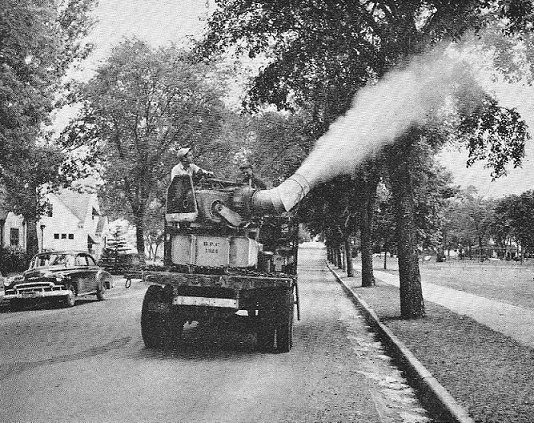DDT as a Causal Factor in Polio
Introduction:
The history of polio, a debilitating viral disease, is fraught with controversy and speculation regarding its origins and contributing factors. While the discovery of the polio vaccine in the mid-20th century marked a significant milestone in the fight against the disease, questions persist about the role of environmental factors, including the pesticide DDT, in its spread. In this blog, we’ll explore the debate surrounding DDT as a potential causal factor in polio and examine the evidence both for and against this hypothesis.
Understanding Polio:
Polio, short for poliomyelitis, is a viral infection caused by the poliovirus, which primarily affects the nervous system and can lead to paralysis, muscle weakness, and in severe cases, death. The disease was a major public health concern in the early to mid-20th century, with epidemics occurring cyclically and affecting thousands of individuals, particularly children.
The Rise of DDT:
DDT, or dichlorodiphenyltrichloroethane, is a synthetic pesticide that gained widespread use in the mid-20th century for its effectiveness in controlling insect vectors such as mosquitoes, which are known to transmit diseases like malaria and yellow fever. DDT was hailed as a revolutionary tool in public health efforts to combat insect-borne illnesses and played a significant role in reducing the incidence of malaria and other diseases in many parts of the world.
The DDT-Polio Hypothesis:
In recent years, some researchers and historians have proposed a controversial hypothesis linking the use of DDT to the spread of polio during the mid-20th century. According to this hypothesis, exposure to DDT and other environmental toxins may have weakened individuals’ immune systems, making them more susceptible to poliovirus infection and severe disease outcomes. Additionally, it has been suggested that DDT residues in the environment may have contaminated food and water sources, facilitating the transmission of the virus.
Evaluating the Evidence:
While the DDT-polio hypothesis presents an intriguing possibility, the evidence supporting a causal relationship between DDT exposure and polio remains inconclusive. Some studies have reported correlations between DDT use and polio incidence, particularly during epidemic years, while others have found no clear association. Furthermore, the widespread adoption of the polio vaccine in the 1950s and 1960s led to a dramatic decline in polio cases, complicating efforts to disentangle the effects of DDT from other factors.
The Role of Environmental Factors:
While the debate surrounding DDT as a causal factor in polio continues, there is broader recognition of the role that environmental factors may play in shaping disease outcomes. Environmental pollutants, including pesticides, industrial chemicals, and heavy metals, have been linked to a range of health problems, including immune system dysfunction and neurological disorders. As our understanding of the complex interactions between environmental exposures and human health continues to evolve, it’s important to consider the potential impacts of environmental factors on disease risk and susceptibility.
Conclusion:
The question of whether DDT played a causal role in the spread of polio remains a subject of debate and controversy among researchers, historians, and public health experts. While the evidence supporting a direct link between DDT exposure and polio incidence is inconclusive, the hypothesis underscores the importance of considering the broader environmental context in disease research and prevention efforts. As we strive to address current and emerging public health challenges, including the ongoing COVID-19 pandemic, understanding the complex interplay between environmental factors, infectious diseases, and human health will be crucial in shaping effective strategies for disease prevention and control.
===
Unraveling the Legacy of Monsanto and DDT: A Complex Relationship with Profound Consequences
Introduction:
The intersection of corporate interests, environmental impact, and public health has been a subject of intense scrutiny and debate for decades. One company that has found itself at the center of this nexus is Monsanto, a multinational agrochemical and biotechnology corporation. In this blog, we’ll delve into the complex relationship between Monsanto and DDT, a synthetic pesticide that has left a lasting legacy of environmental contamination and human health concerns.
A Brief History of Monsanto:
Founded in 1901, Monsanto began as a chemical company specializing in the production of saccharin, a sweetener, and later expanded into the manufacturing of synthetic chemicals, plastics, and agricultural products. In the mid-20th century, Monsanto played a pivotal role in the development and promotion of DDT, a powerful insecticide hailed as a miracle weapon against insect-borne diseases such as malaria and typhus.
The Rise and Fall of DDT:
DDT, or dichlorodiphenyltrichloroethane, was first synthesized in 1874 but gained widespread use as an insecticide in the 1940s and 1950s due to its effectiveness in controlling disease vectors. Monsanto played a key role in the production and promotion of DDT, which was used extensively in agriculture, public health, and pest control programs around the world. However, concerns about its environmental impact, including bioaccumulation, persistence, and toxicity to wildlife, led to its eventual ban in many countries in the 1970s and 1980s.
Monsanto’s Role in DDT Controversy:
As one of the primary manufacturers of DDT, Monsanto has faced criticism and legal challenges related to its involvement in the production and promotion of the pesticide. Despite mounting evidence of DDT’s harmful effects on the environment and human health, Monsanto continued to defend the safety and efficacy of the chemical, lobbying against regulatory restrictions and challenging scientific findings that linked DDT to adverse health outcomes.
Environmental and Health Impacts:
The legacy of DDT contamination continues to haunt communities and ecosystems around the world, with persistent residues of the pesticide found in soil, water, and wildlife decades after its use was banned. Studies have linked DDT exposure to a range of health problems, including cancer, reproductive disorders, and developmental abnormalities. Additionally, DDT’s impact on biodiversity and ecosystem health has raised concerns about its long-term consequences for environmental sustainability.
Accountability and Responsibility:
In recent years, Monsanto has faced mounting legal and public pressure over its role in environmental pollution, product safety, and corporate accountability. Lawsuits filed by communities affected by DDT contamination and other hazardous chemicals have resulted in multi-million-dollar settlements and judgments against the company. These legal battles have forced Monsanto to confront its legacy of environmental harm and take responsibility for the consequences of its actions.
Looking Ahead:
The case of Monsanto and DDT serves as a cautionary tale about the unintended consequences of industrialization, technological innovation, and corporate influence on public policy and environmental regulation. As we confront the challenges of the 21st century, including climate change, biodiversity loss, and public health crises, it’s essential to learn from the mistakes of the past and adopt more sustainable and ethical approaches to resource management, chemical usage, and corporate governance.
Conclusion:
The story of Monsanto and DDT underscores the complex interplay between corporate interests, environmental stewardship, and public health in the modern world. While DDT may have once been viewed as a miracle solution to insect-borne diseases, its widespread use and subsequent ban highlight the need for greater caution and accountability in the development and deployment of chemical technologies. As we strive to build a more sustainable and equitable future, it’s imperative that we learn from the mistakes of the past and work together to address the pressing environmental and social challenges of our time.
See also
https://wp.toxi.com/2024/03/polio-actually-from-arsenic/



